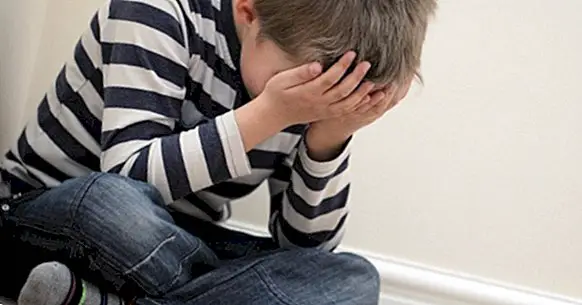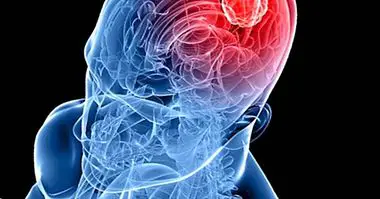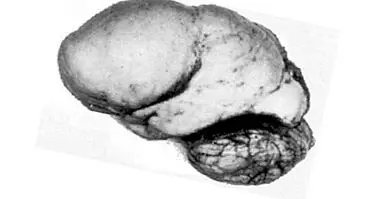The Parental Alienation Syndrome: invention or reality?
Since Richard Gardner first described the term of parental alienation in 1985, the controversies and criticisms derived from this construct have been very diverse. The detractors of the concept have relied on different types of arguments to invalidate their existence in recent decades, which authors such as Suárez and Nodal (2017) have analyzed in a recent review in order to shed some light on this complex phenomenon.
So that... Is the concept of Parental Alienation Fundamental? Let's see it
- Related article: "Divorce of parents, how does it affect children?"
The Parental Alienation Syndrome
Gardner's original definition of the SAP referred to the "alteration that usually appears in the context of a divorce, in which the child despises and criticizes one of its parents, when such negative evaluation is unjustified or exaggerated (in Vilalta Suárez, 2011) ".
SAP implies that a parent perniciously influences the child so that the latter rejects the other parent in those cases in which there is no evidence of any type of mistreatment by the alienated parent towards the child. Specifically, the following are included as defining signs of SAP (Vilalta Suárez, 2011):
- Existence of a campaign of denigration .
- Frivolous or absurd rationalizations of the rejection of the parent.
- Lack of affective ambivalence towards the parent figures.
- Appearance of the «phenomenon of the independent thinker», it is argued that the decision of rejection is exclusive of the child.
- Automatic support to the "beloved" father in any position.
- Absence of guilt in the child for the expression of rejection.
- Apparition in the story of the son of borrowed scenes, which the child has not lived or can not remember.
- The extent of rejection to the family or environment of the rejected parent.
According to the aforementioned authors, the Practical Guide for Integral Protection Measures against Gender Violence, prepared by a group of experts on the subject and by the General Council of the Judiciary in 2016, alleges the impossibility of validating the existence of the SAP.
This categorization is based on the fact that such a psychological entity it is not included in the classification systems of mental disorders of reference current, such as the DSM-V. This is especially relevant since this document becomes a fundamental guide in the field of forensic psychology and can in turn condition the conception that professionals in the area of clinical psychology have about the SAP construct.
- Maybe you're interested: "The 8 types of family conflicts and how to manage them"
Critical analysis on SAP validation
In the work carried out by Suárez and Nodal (2017) different arguments are presented that question the justifications offered by the detractors of the SAP and the authors of the aforementioned Guide when it comes to invalidating their existence.
In the first place, it seems that the very nomenclature of the SAP defining it as a syndrome has generated a lot of debate , in the sense of whether its conceptualization should be legitimized as a pathological phenomenon, a mental disorder or a disease.
1. Pathologization of a relational phenomenon
According to the American Psychiatric Association (APA), a syndrome is defined by a set of signs and / or symptoms that, based on their frequent concurrence, may suggest a pathogenesis (DSM-IV-TR, 2014). While it is true that the "syndrome" element may be insufficiently scientifically justified in the SAP, not for that reason the existence of the situational phenomenon can be denied that parental alienation describes. This can be considered independent of whether there is sufficient consensus to grant the nosology of the syndrome.
Related to the above, the SAP has not been included as such in any of the versions of the DSM, although the debate was very present to include it or not among the group of experts responsible for the official development of the current manual.
2. The circular argument
In this sense, the authors of the paper argue that the fact that the SAP has not been finally collected in the classification system, does not necessarily imply that its existence must be denied . See the example used as "the battered woman syndrome" or homosexuality, which was defined as a mental disorder until 1973. Both justify the fact that, although there is no specific diagnostic label on a psychological problem during a given time , this can be equally relevant and of priority attention in clinical professional practice.
So, if finally the SAP or AP (parental alienation) is contemplated in a future revision of the DSM, would it imply that only from that moment could it be defined as a mental pathology and not before?
3. Alleged lack of interest from Psychology
Another argument that Suárez and Nodal (2017) question refers to the belief that the SAP has not been (and is not) of interest to the psychological scientific community. The text lists numerous works that show just the opposite, although it is true that they also include meta-analysis studies that describe the difficulty of empirically validating the SAP . Therefore, it can not be said that there is no interest from the scientific community in the clinical and forensic area to investigate and delimit the SAP (or AP) more objectively.
In addition to the above, it seems that in the field of jurisdiction, no ruling can be found either of the Supreme Court or the Court of Human Rights of Strasbourg intrinsically questioning the existence of the SAP.
SAP and DSM-V
As previously mentioned, the SAP is not recognized as a nosological entity in the DSM-V. However, in the section corresponding to "Problems that may be subject to clinical attention" seems to contemplate an entity called "Relationship problems between parents and children."
Considering its diagnostic criteria, this can be adjusted to what is defined in the SAP: problem of psychological basis, relative to family education and that causes functional impairment at a behavioral, emotional and cognitive level. Therefore, although it is conceived as a relationship problem and not as a mental disorder, it seems that the SAP or AP can be described in a way that makes it possible to detect them by means of specific defining indicators in real cases, the assessment of the need to require an intervention at the psychological and / or forensic level and, finally, that allows in the future the continuation of investigations that determine more accurately what implications the SAP presents.
Bibliographic references:
- American Psychiatric Association., Kupfer, D.J., Regier, D.A., Arango Lopez, C., Ayuso-Mateos, J.L., Vieta Pascual, E., & Bagney Lifante, A. (2014). DSM-5: Diagnostic and statistical manual of mental disorders (5th ed.). Madrid [etc.]: Editorial Panamericana Medical.
- Escudero, Antonio, Aguilar, Lola, & Cruz, Julia de la. (2008). The logic of the Parental Alienation Syndrome of Gardner (SAP): "threat therapy". Journal of the Spanish Association of Neuropsychiatry, 28 (2), 285-307. Retrieved on January 26, 2018, from //scielo.isciii.es/scielo.php?script=sci_arttext&pid=S0211-57352008000200004&lng=es&tlng=es.
- Suárez, R.J. V., & Nodal, M.W. (2017). About the Myth of Parental Alienation Syndrome (SAP) and the DSM-5. Papers of the psychologist, 38 (3), 224-231.
- Vilalta Suárez, R. J. (2011). Description of the Parental Alienation Syndrome in a forensic sample. Psicothema, 23 (4).



















